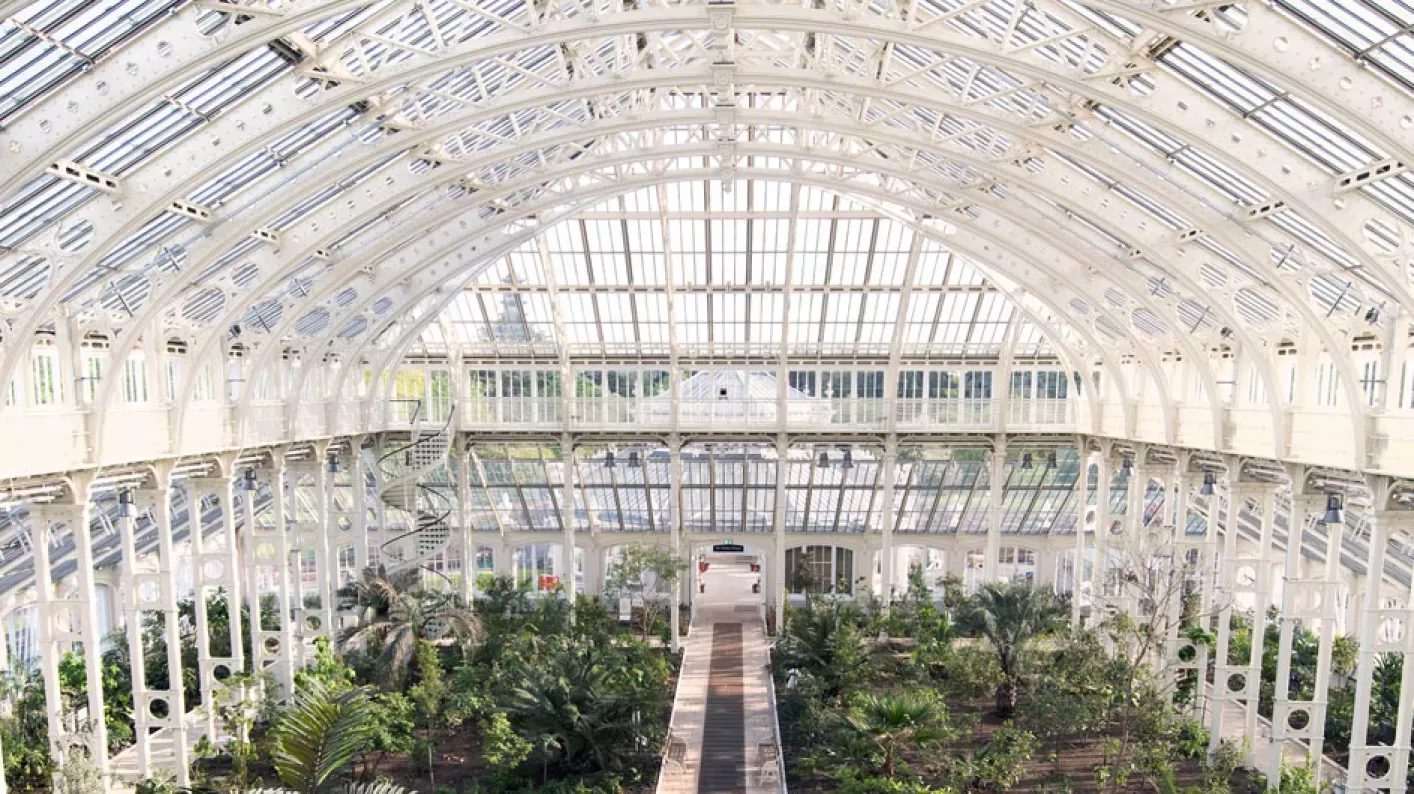
Kew Gardens
Temperate House
Discover the secrets of the world's temperate zones inside this glittering cathedral.
Explore the Temperate House
Opening and closing times may vary: please check planned closures for more information. We apologise for any inconvenience caused.
More than 800 remarkable paintings cover the walls of the Marianne North Gallery.
A vivid collection of 19th century botanical art, the gallery is a treat for both art lovers and adventurous minds. As a woman who defied convention, North travelled the world solo to record the tropical and exotic plants that captivated her.
She challenged the tradition of Victorian flower painting and chose to paint plants in their natural settings instead. Her work became a powerful record of the dramatic landscapes she visited and the plants that inhabit them - years ahead of the invention of colour photography.
Now, North’s vast collection of paintings is on permanent display here at Kew, exhibited in geographical order for you to follow in her footsteps.
See our historical and scientific collections displayed together at Kew for the first time.
Across the world, plants and fungi are deeply rooted within spiritual and religious beliefs. Inspired by Marianne North’s paintings of plants sacred to the Hindu faith, the Sacred plants and fungi exhibition is an exciting opportunity to see parts of Kew’s collections that are not often shown to the public.
Explore why certain plants and fungi are considered sacred, their scientific importance and how they are used: from enchanting sandalwood crafts to a deep dive into the story of the mystery plant, soma.
Displaying until April 2024.

 from the Fungarium gallery crop.jpg.webp?itok=qoZLRwl8)



Victoria Gate. The Marianne North Gallery is located near the Temperate House and Pavilion restaurant.
Included with entry to the Gardens.
Daily, 10am to 5pm
Closed for the weekends of 13 to 14 April, 20 to 21 April and 27 to 28 April 2024.
We may occasionally need to close attractions for maintenance or visitor safety: Check for planned closures and visitor notices before you visit.
We want everyone to have an enjoyable time at Kew, so we aim to provide accessibility support across the Gardens.
The Marianne North Gallery is fully accessible by wheelchair and can be entered via a platform lift near the Temperate House gates.
Electric wheelchairs are also permitted.
Please note that we cannot accommodate mobility scooters in the gallery, however we can provide wheelchairs for visitors to use on arrival.
At 26 years old, Marianne North visited Kew with her father on a trip that was to inspire her life-long fascination with far-flung plants and flowers.
After his death, she set off on a series of trips to some of the world’s most remote jungles and forests.



As a wealthy, unmarried woman, North travelled to areas that the 'establishment' thought she should not visit – from Borneo to Japan, South Africa to South America.
Her journeys became one of the most reported subjects in the British newspapers of the period. Despite having no formal training, North’s talent gained the admiration of notable scientists, including Charles Darwin.
After thirteen years of travel, North had an idea – to exhibit the paintings in the Gardens where her passion began. In 1879, she offered to build a gallery here if Kew Director Joseph Hooker would agree to display her life’s work.
The gallery was completed in 1882 and is open to explore her legacy today.
A £1.8 million Heritage Lottery Fund grant and additional donations allowed for the restoration of the building and the conservation of the artwork in 2008.
During the project, a conservator discovered a painting hidden on the back of another painting. It had not been seen for over 120 years, since North had covered it with a backing board!

Kew Gardens
Discover the secrets of the world's temperate zones inside this glittering cathedral.
Explore the Temperate House
Kew Gardens
Meet some of Kew’s botanical artists and find out about the scientific role of their artwork.
What is botanical art?
Kew Gardens
The magic of mulch is bringing the Great Broad Walk Borders to life.
Read more about the Great Broad Walk Borders